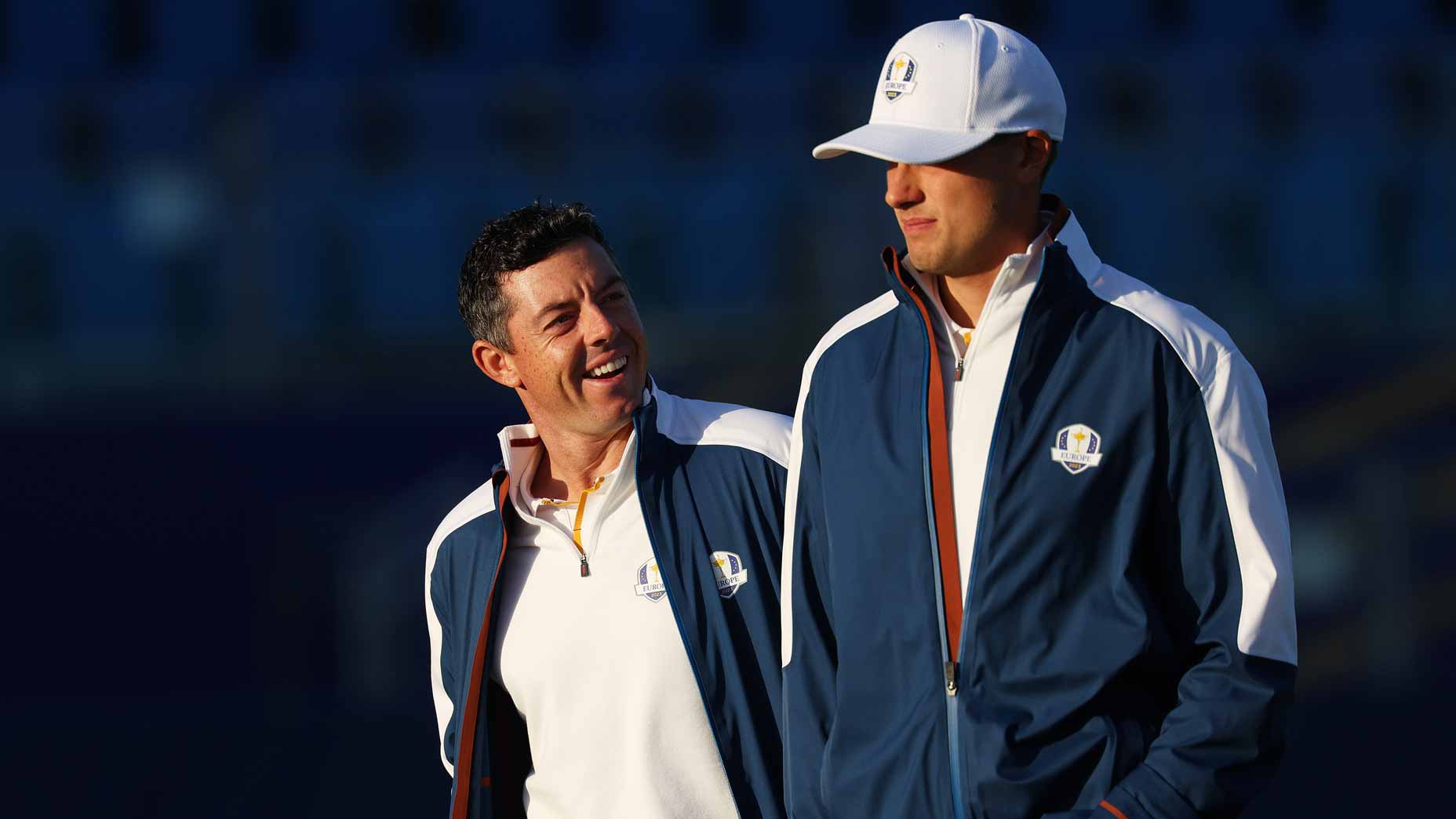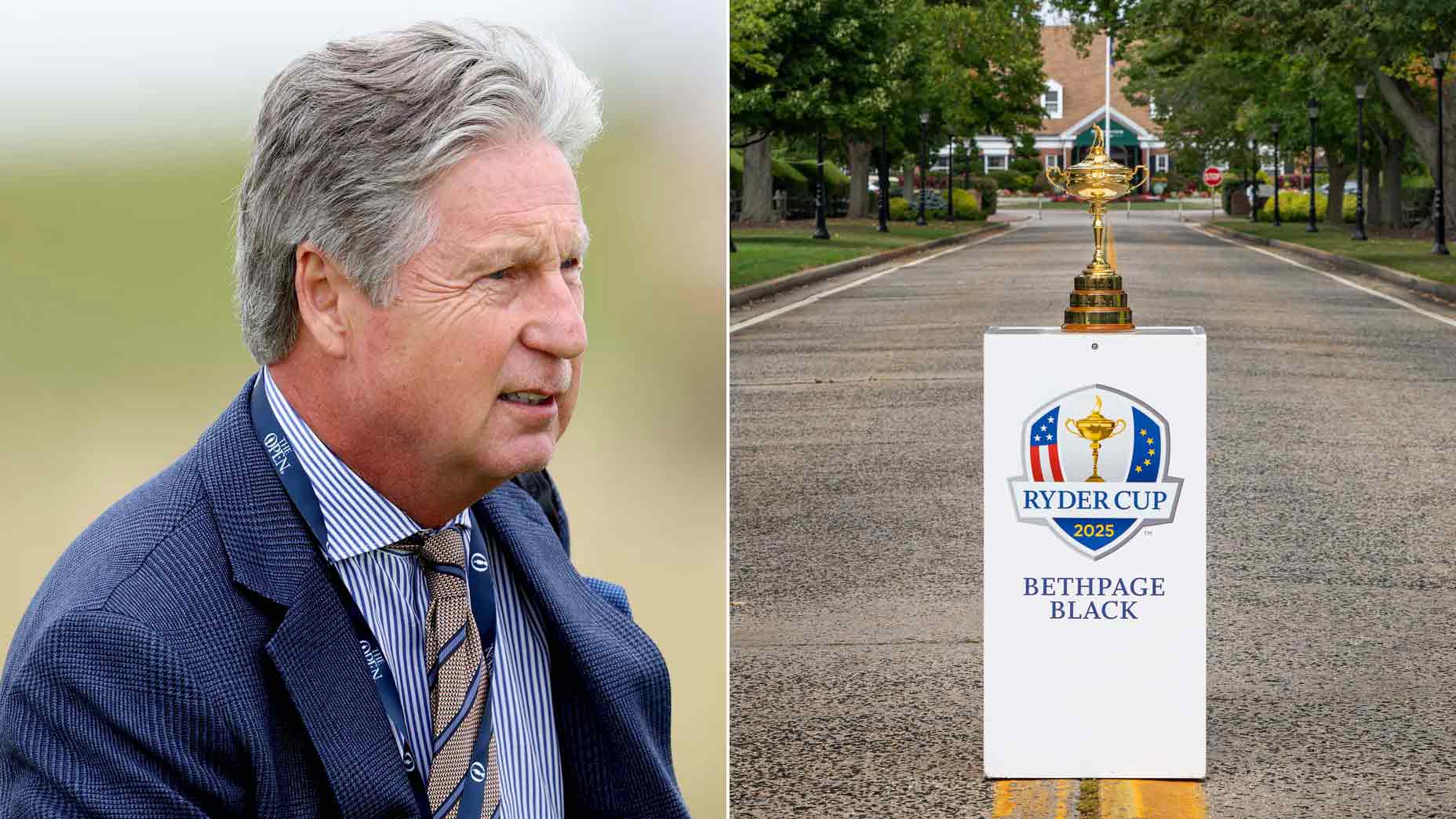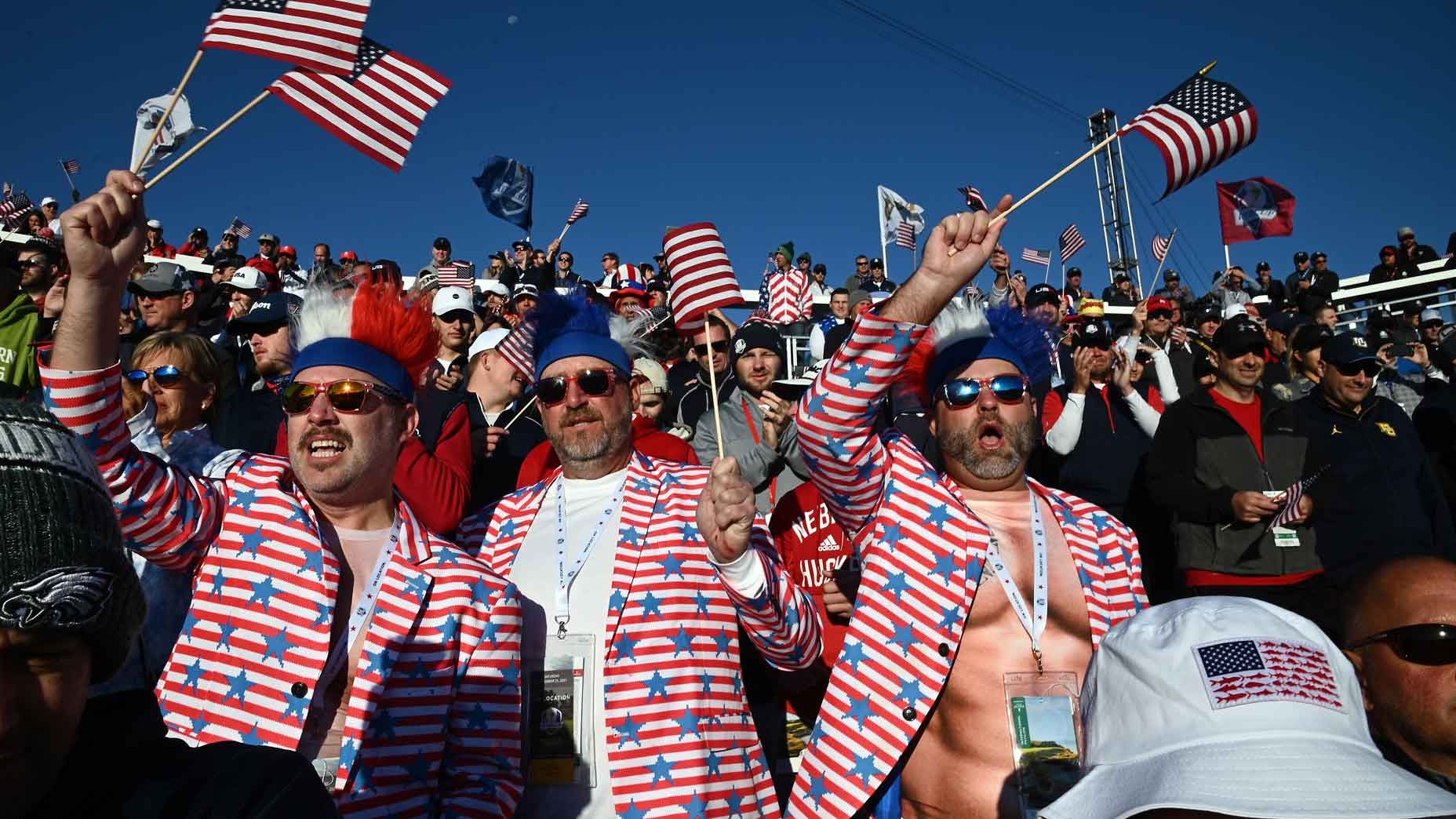5 Ryder Cup myths, debunked: Why Marco Simone will be different
- Share on Facebook
- Share on Twitter
- Share by Email

Rory McIlroy and Ludvig Aberg are among those making this a different type of European team.
Getty Images
ROME — Nothing ever changes, right until it does.
It’s easy to imagine an alternate reality for this year’s Ryder Cup. A reality in which Bryson DeChambeau had played his way onto Team USA — and Dustin Johnson, too. In which Sergio Garcia was chosen to reprise his role as European team leader and Paul Casey qualified for one more run under captain Henrik Stenson. It’s easy to imagine this Ryder Cup looking an awful lot like the last two.
But things are different at this year’s Ryder Cup. Europe last hosted in 2018 at Le Golf National outside of Paris; half that U.S. team plus all four European captain’s picks have gone to LIV in the years since. After a U.S. romp at Whistling Straits in 2021 you’d have figured that entire team would be back in 2023, but just seven of 12 have made this year’s team.
This isn’t the Ryder Cup you know. These aren’t the teams you’ve grown accustomed to. There’s plenty about this year’s event that will feel similar — the blue-and-yellow singing European fans, hatless Rory McIlroy torpedoing driver, Justin Thomas screaming let’s go after made putts, one group giving another passive-aggressive side-eye after they’re made to putt out a two-footer. But there are some stereotypes that are no longer true, some myths that deserve busting, things that have changed about this competition.
Here are five things we used to take for granted that just aren’t true this year.
Myth 1: The Americans are longer drivers
In recent years the Americans have been the bombers. They’ve hit it longer than their opponents and have set up courses accordingly; the U.S. team dominated par-5 scoring at Whistling Straits in a week they had the likes of DeChambeau, Johnson, Brooks Koepka, Tony Finau and Scottie Scheffler while the European team trotted out the relatively shorter likes of Lee Westwood and Ian Poulter.
But this week? The European team actually boasts the four longest drivers in the field. Rory McIlroy just set a new season-long record for PGA Tour driving distance, averaging just over 326 yards. Ludvig Aberg has been heralded as a “f— monster” off the tee, per someone close to the European team. Nicolai Hojgaard is second on the DP World Tour in strokes gained off the tee and eighth in driving distance. And Jon Rahm is no slouch either.
The U.S. team is plenty long — Wyndham Clark, Scottie Scheffler, Patrick Cantlay and Max Homa all have tons of power — but it’s hardly an American advantage. The particularly smart numbers folks give the distance edge to Europe for the first time in my memory.
Myth 2: The Europeans are straighter hitters
“Driving accuracy” is hardly the sexiest statistic but it’s been one area where Team Europe has traditionally outpaced the U.S. side. That’s not the case this year; the aforementioned European bombers make the home side longer but not necessarily straighter.
Collin Morikawa, on the other hand? He’s the second-straightest driver on the PGA Tour, hitting 69.6 percent of fairways this season. Brian Harman is 11th. Patrick Cantlay is 15th. Rory McIlroy (155th) is not.
A few weeks ago, teams scouting Marco Simone were blown away by the length of the rough. But earlier this week that rough was chopped to a more playable height, reportedly at the request of some of the European side. (They’re in charge of the setup, after all; there’s no way it would be done against their wishes.) They’d like to swing freely, too.
Myth 3: The Americans are far more talented
In 2021 there was a wild disparity in world ranking between the U.S. and Europe. The U.S. side boasted eight of the top 10 players in the world and 10 of its 12 players ranked ahead of Viktor Hovland, the third-highest Euro.
That’s hardly the case this year. Per DataGolf, four of the top seven players in the world (McIlroy, Hovland, Rahm and Fleetwood) are playing for Team Europe. And while the bottom quartile of the home team certainly doesn’t stack up — Aberg, Hojgaard and Robert MacIntyre are far lower ranked — the European side doesn’t have to play out of their minds to contend. They just have to play like themselves. That’s why the betting markets have swung from making them nearly a 2 to 1 underdog several months ago to slight favorites entering Friday’s event.
Myth 4: The rough is damn long and the course is damn hard
As I mentioned above, the rough is not as crazy as the early drop-the-ball-in-the-thickest-part videos made it seem in the weeks preceding the Cup. Also — they’ve made it shorter! The rough itself is pretty variable; by the edge of the fairway it’s relatively light and then it gets progressively nastier the further you miss. We took a peek here:
Marco Simone has some teeth; the Italian Open hasn’t had particularly low scores in the three years it’s been played at this year’s venue. That might lead you to believe that this would be a Ryder Cup bereft of birdies. But that won’t be the case.
I’ve been lucky enough to walk the course but even just by checking the scorecard you can get a sense that there will be a ton of birdies. There are three drivable par-4s and there are four reachable par-5s, after all — there will be plenty of fireworks!
There will also be plenty of bogeys, though. The European side has determined its best chance comes from keeping wedges and short irons out of the Americans’ hands and playing to their own strengths — long iron approaches — so the majority of the par-4s down the stretch are either in the vicinity of 300 or 500 yards. One of the reasons this should be such an exciting match-play course is the pure variety in scores.
Myth 5: LIV golfers were banned
Much of the Ryder Cup-related conversation the last two years has surrounded the question of whether or not golfers who defected to LIV would be eligible for the Ryder Cup. The answer? It’s a bit complicated. But the Ryder Cup itself did not ban any LIV golfers from competing.
But that doesn’t mean it was an easy road for LIV pros to get to Rome, either. Even though LIV’s lone representative, Brooks Koepka, shrugged off the suggestion that his coworkers had a tougher time qualifying (“play better,” he said) there were additional barriers in their way.
For the U.S. team, LIV events weren’t factored into the points system used for qualifying. That meant the majors were even more important — and some LIV golfers weren’t eligible for those, either. Dustin Johnson and Bryson DeChambeau have suggested in recent weeks that they’d have made the team if they had stayed on the PGA Tour. They may well be correct! But their new circuit provided a less obvious pathway to qualification.
The European side provided a slightly more concrete barrier to entry for LIV players. In March, the DP World Tour won a legal battle against LIV Golf which allowed the circuit to penalize golfers who had played LIV events without permission. In the wake of that decision several LIV pros resigned their memberships — pros that included Ryder Cup stalwarts Sergio Garcia, Ian Poulter and Lee Westwood. Even when LIV, the PGA Tour and the DP World Tour announced in June that they were searching for common ground, there was no way to undo that resignation in time for the Cup. Garcia explored the possibility of paying his fines in time to become eligible but was told that couldn’t happen before 2024.
It’s relatively unlikely that their fines and resignations made much of a difference in the makeup of the team itself, though perhaps Garcia could have played his way on. There’s no question that European leadership would look different, however. Henrik Stenson was team captain before he left for LIV. It’s likely several of his vice captains would have been different were it not for their defections, too.
We’ll never see that version of this Ryder Cup. But this one promises to be plenty good.
Latest In News

Dylan Dethier
Golf.com Editor
Dylan Dethier is a senior writer for GOLF Magazine/GOLF.com. The Williamstown, Mass. native joined GOLF in 2017 after two years scuffling on the mini-tours. Dethier is a graduate of Williams College, where he majored in English, and he’s the author of 18 in America, which details the year he spent as an 18-year-old living from his car and playing a round of golf in every state.









